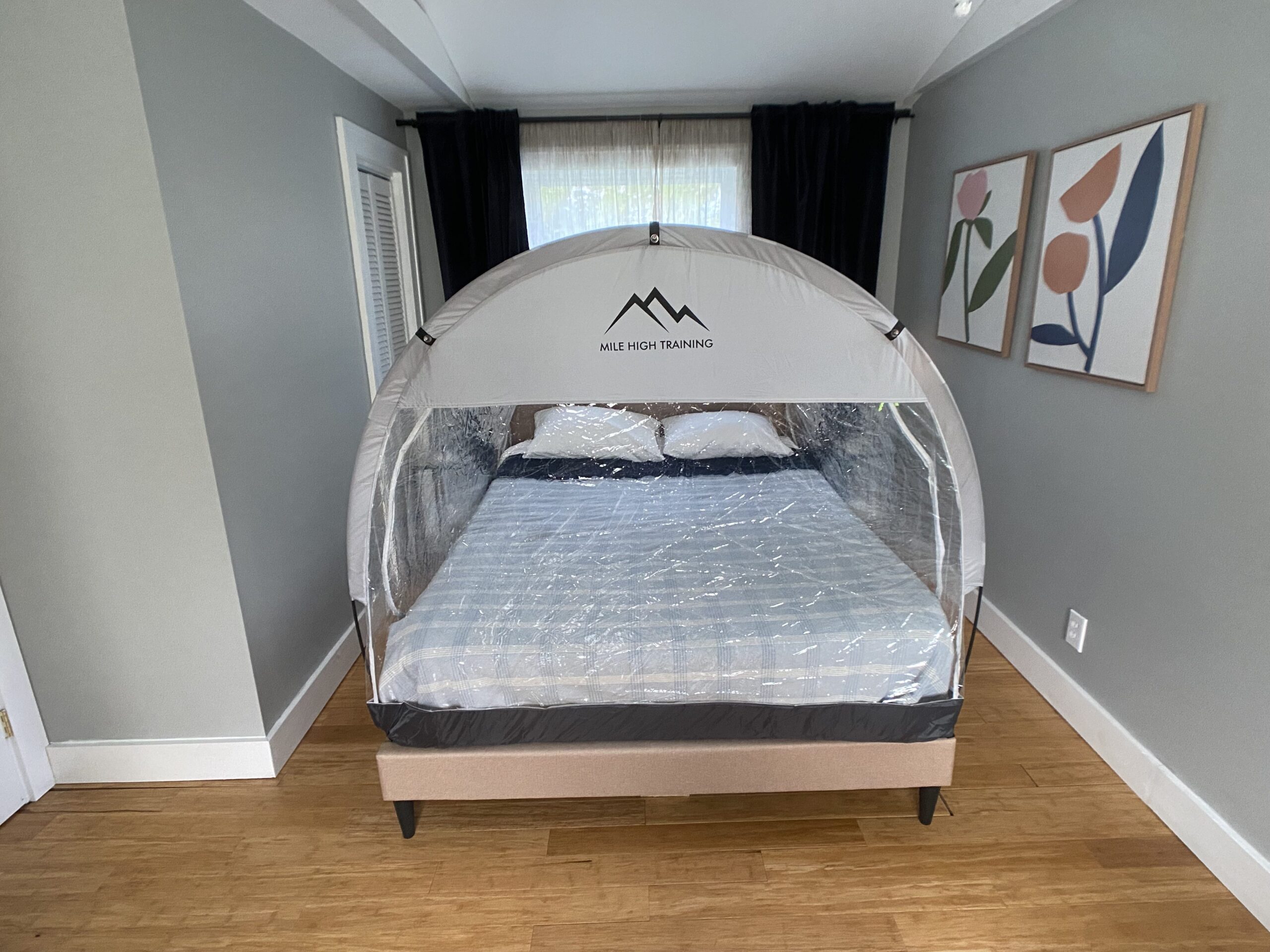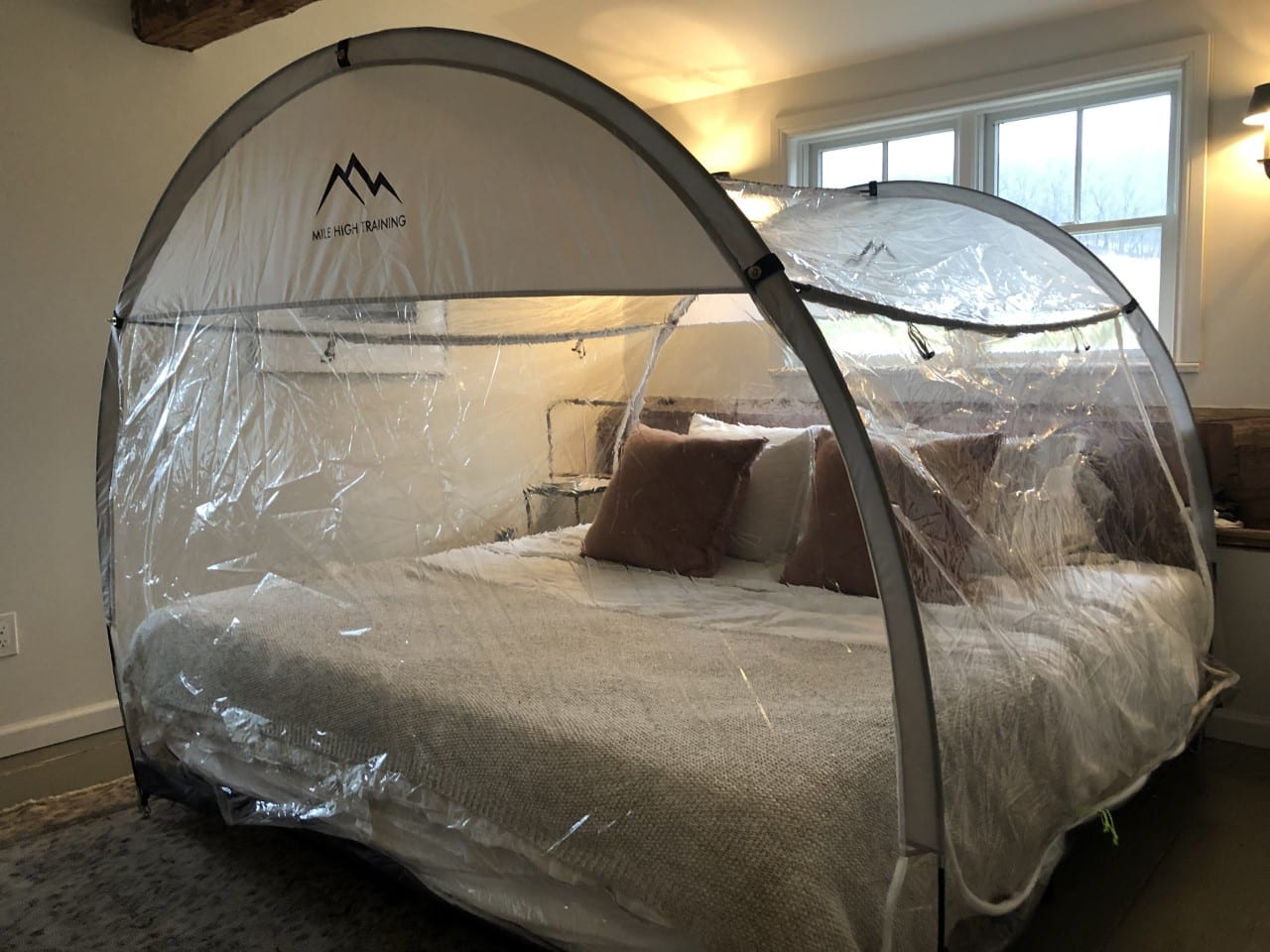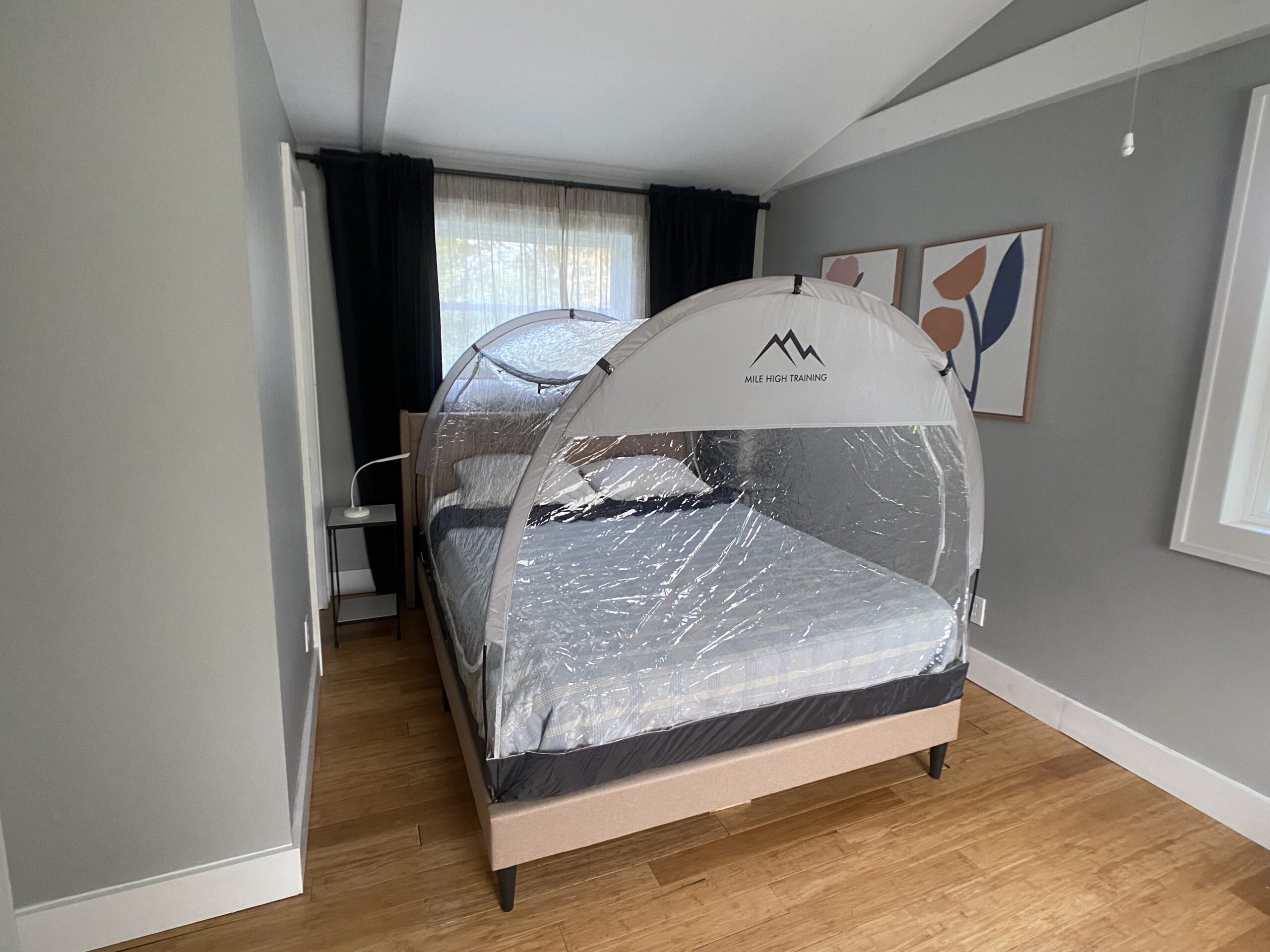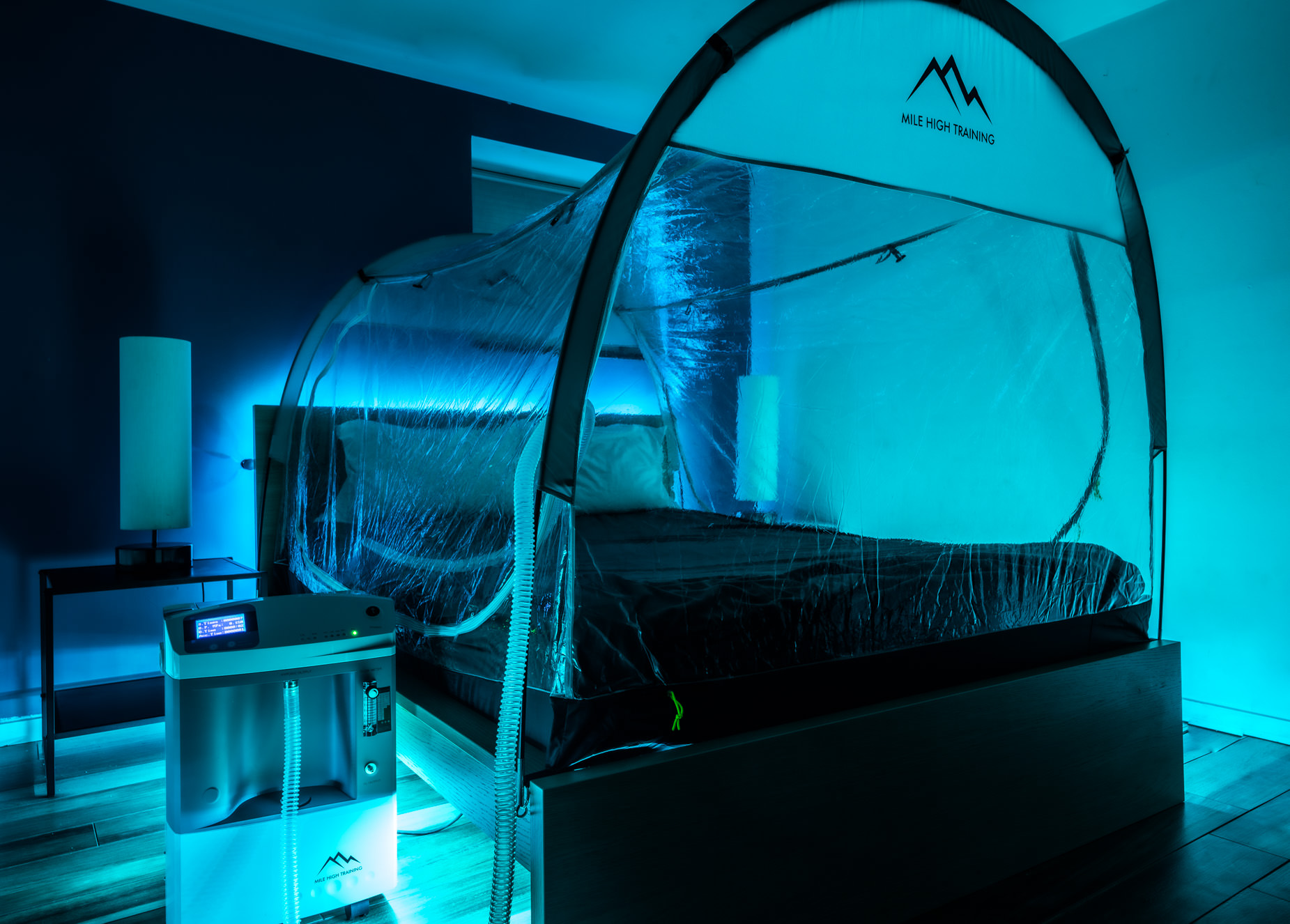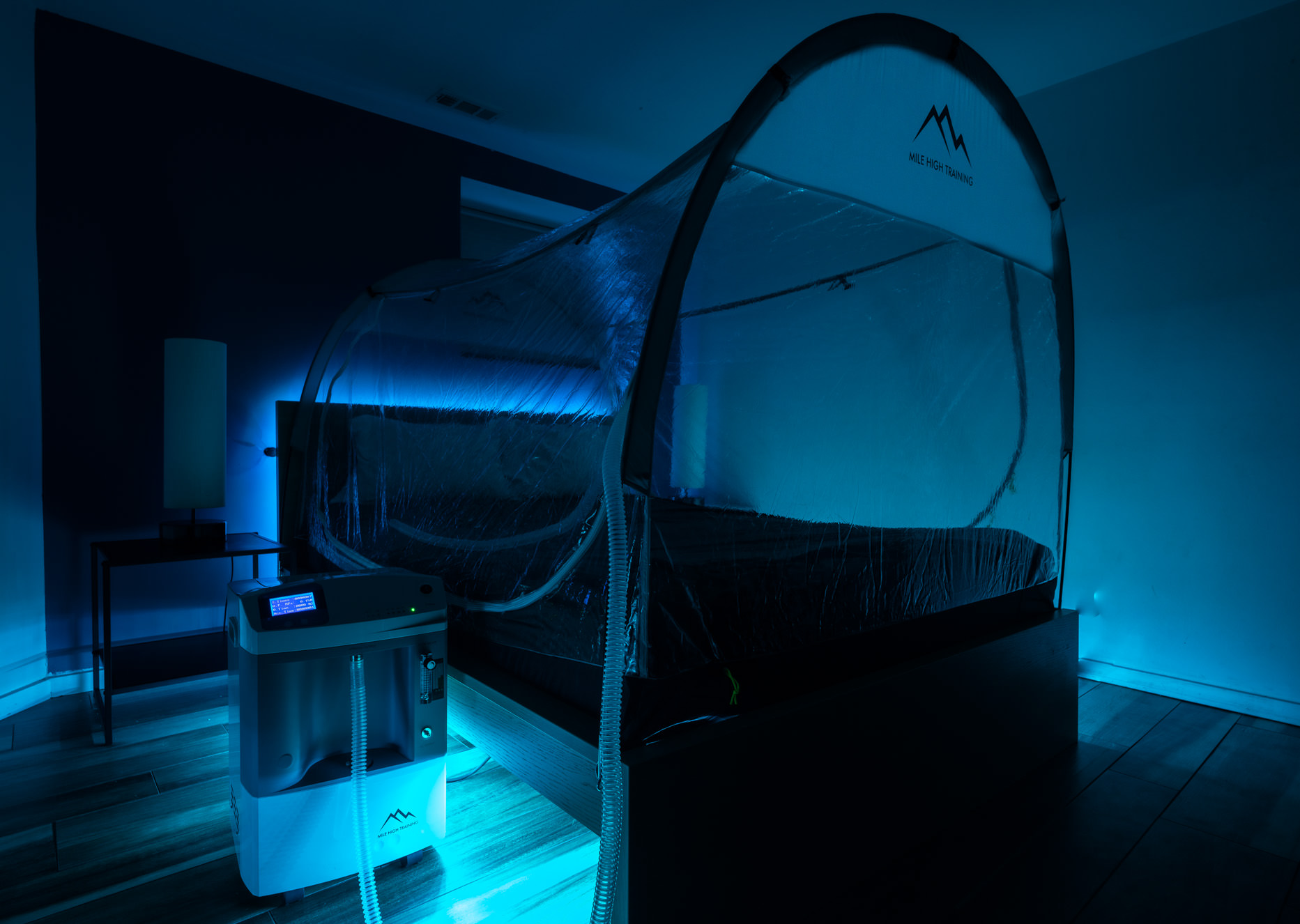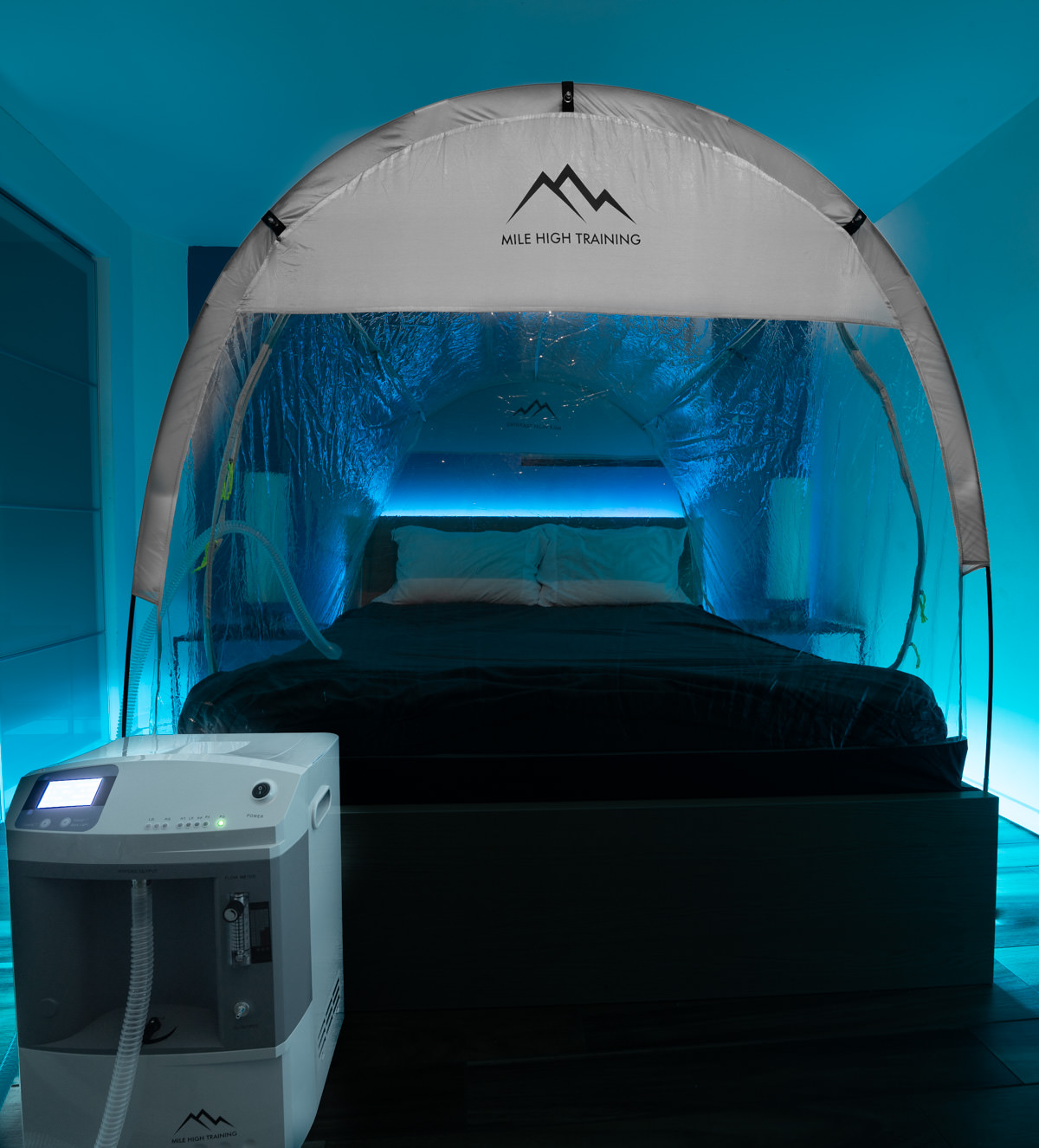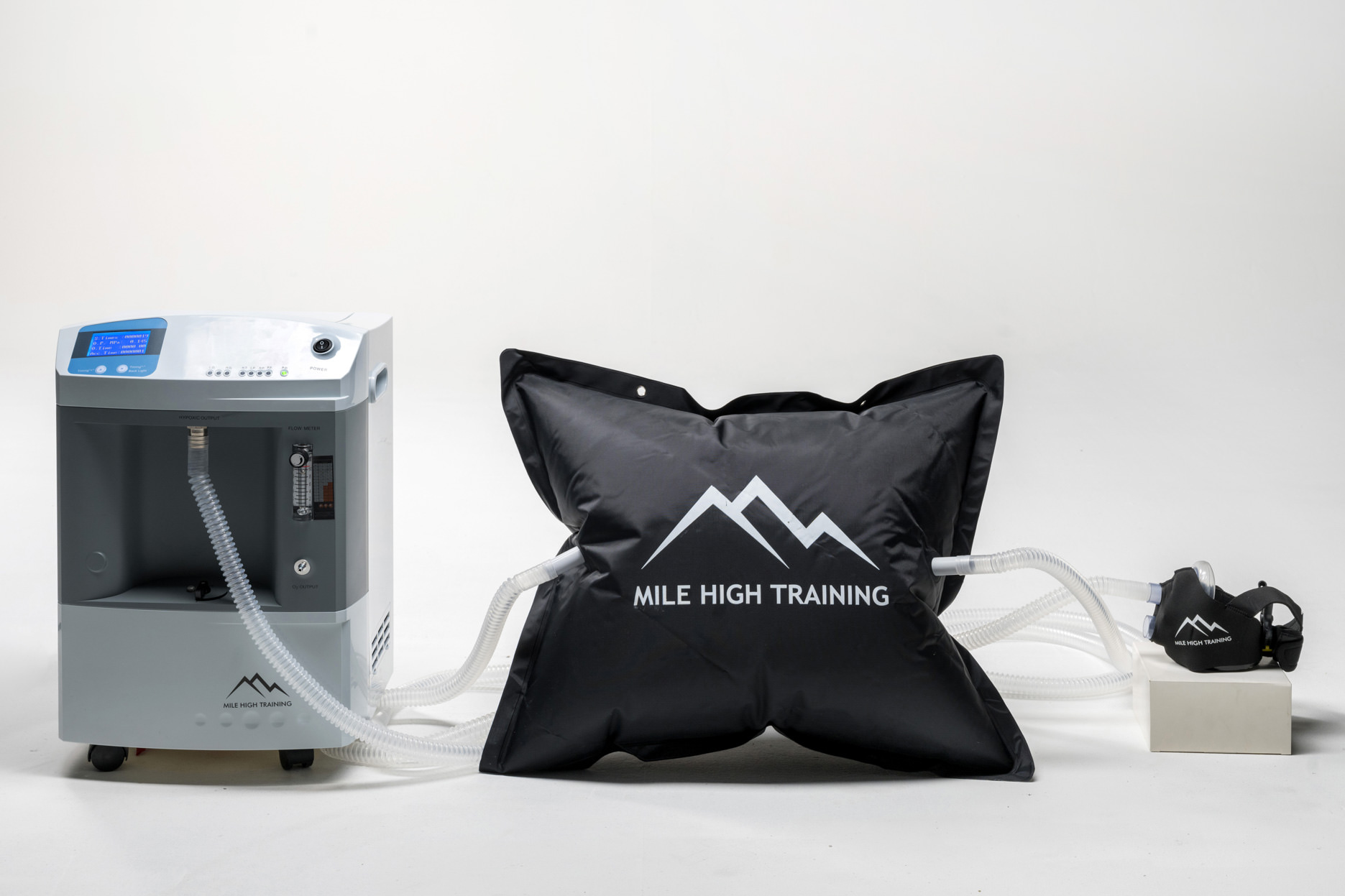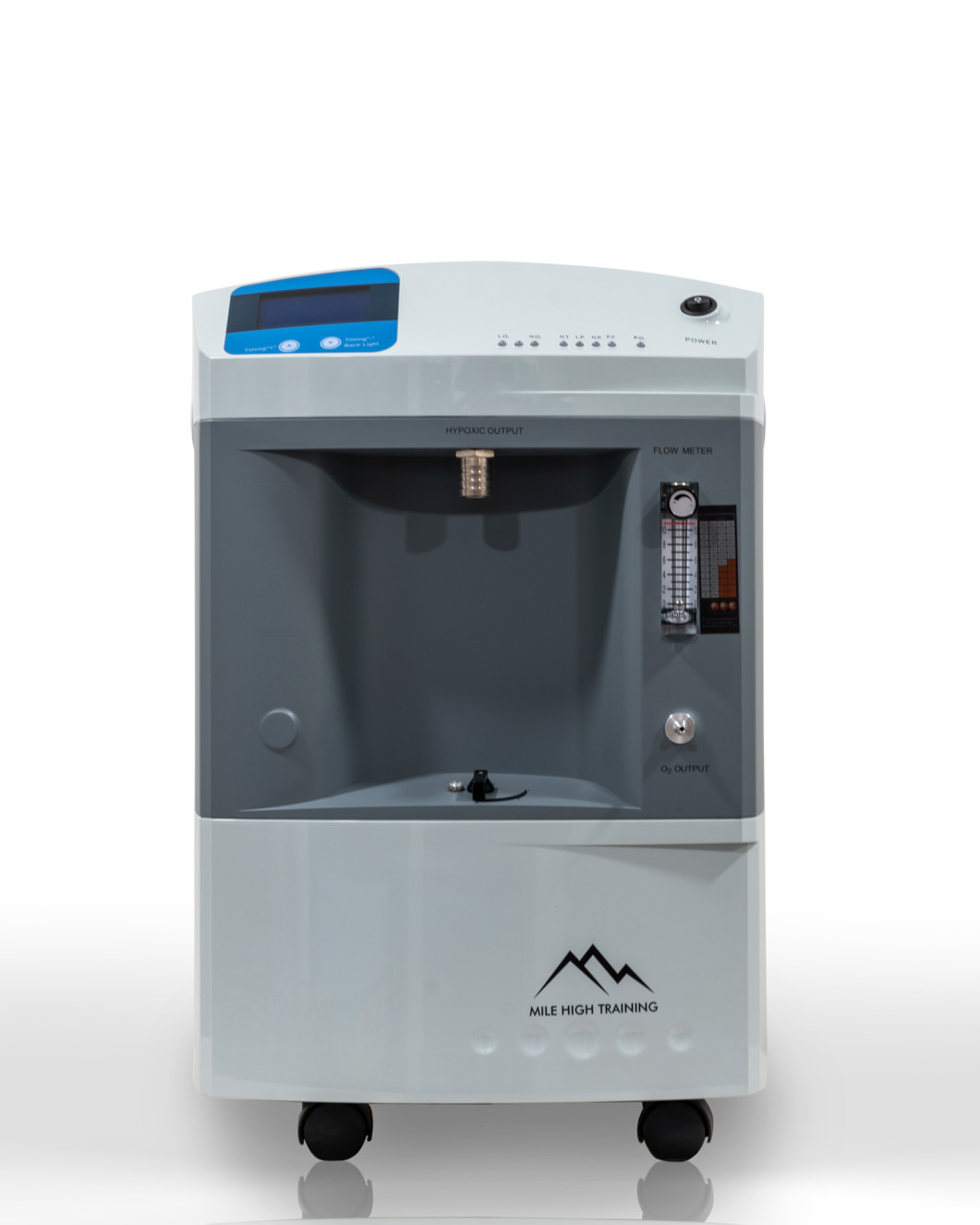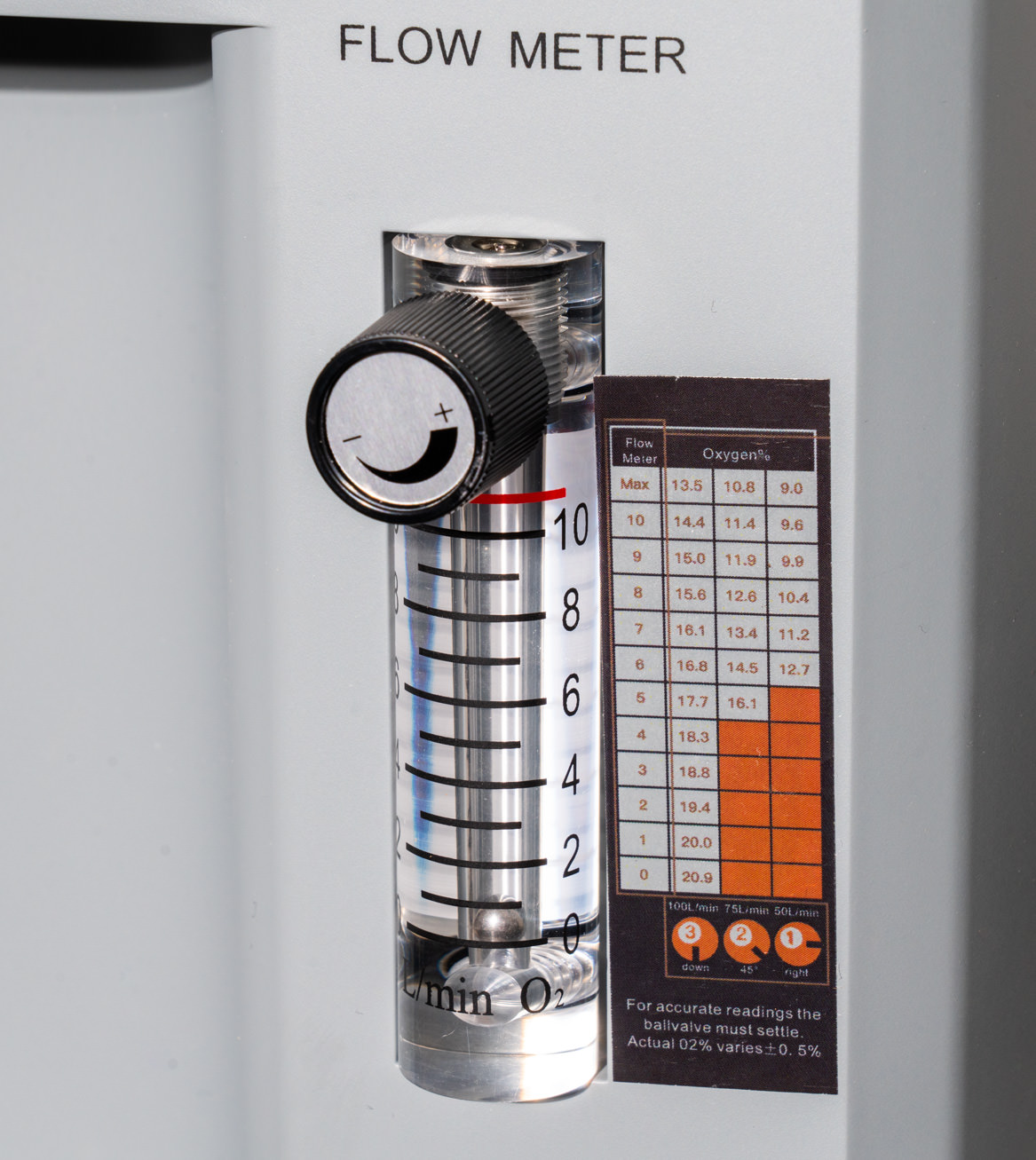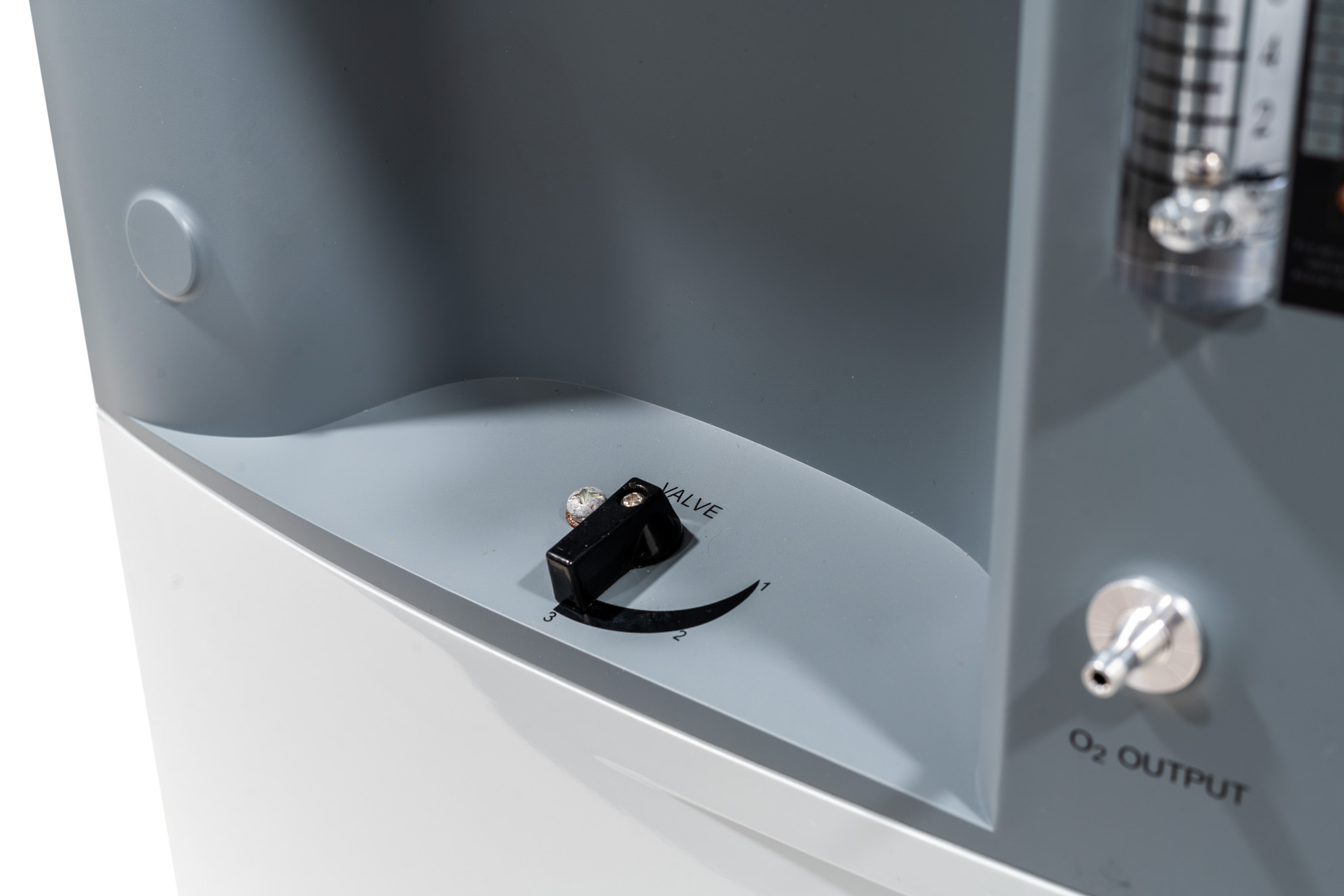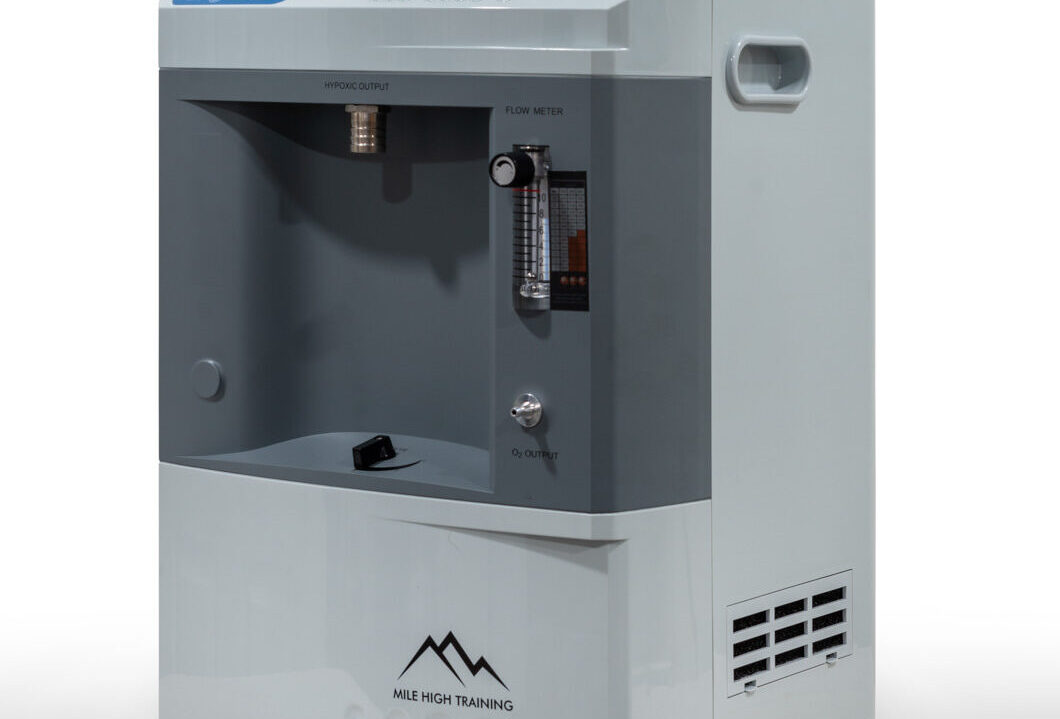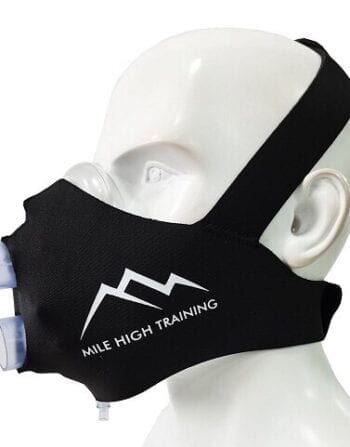Background Info: Sleeping at Altitude
Sleeping at Altitude, or “Living High, Training Low” is the most widely used technique for pre-acclimatization and improving endurance sports performance. Combined with our low-oxygen air generator, our altitude canopy enables individuals to sleep at simulated altitude at home or on the road. This training technique has now been used within elite sport for over a decade, and is widely considered to be the most effective method to pre-acclimatize to altitude.
Sleeping at simulated altitude involves sustained exposure to hypoxia (low-oxygen air) at night with physical training sessions at sea-level during the day. The goal of sleeping at altitude is to lower blood oxygen levels below 94% in order to trigger the production of Red Blood Cells (RBC) and hemoglobin. By gradually increasing the altitude setting on the machine, individuals can adjust the body to high altitudes and slowly build resistance to low blood oxygen levels. Typically individuals will start with the altitude generator around 5,000ft. and slowly increase the altitude approximately 1,000ft every 3-5 days. Most athletes usually sleep no higher than 10,000ft, while mountaineers or anyone preparing for a high altitude hike may sleep up to and beyond 12,000ft, depending on how long they are using or renting the altitude equipment.
Using a high altitude tent avoids inherent problems associated with permanent residence at altitude such as limited training load in oxygen deficient air, muscle loss, immune system suppression, advanced dehydration and excessive fatigue. Through the use of Mile High Training’s altitude canopy and Altitude Bedroom conversion, individuals can safely and effectively take advantage of “Sleeping High” and “Training Low.”
Proven Benefits of Sleeping at Altitude (see research links below)

